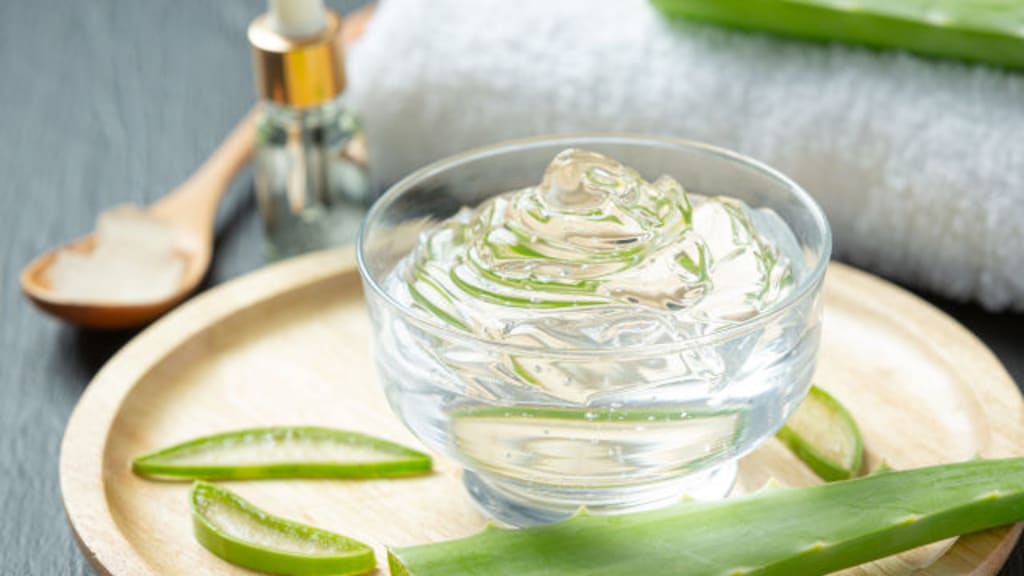
Aloe vera, a succulent plant, is known to have many cosmetic and even medicinal benefits. Its applications extend far beyond skin care and hydration. In this article, we’ll explore the numerous ways Aloe vera can be your green companion in creating sustainable, eco-friendly products.
-
Grow Your Aloe Vera Plant: Growing your own aloe vera plant is simple and sustainable. They thrive indoors on a windowsill or outdoors in a garden, ensuring fresh supply of aloe vera gel. Aloe vera is an easy-care plant for beginners, requiring minimal water and maintenance.
- Soil: Aloe can adapt to various soil types. For the best approach use well-drained sandy or cactus potting medium in containers.
- Water: Water regularly allowing the soil to dry in between the waterings. Overwatering and prolonged dryness can harm the plant.
- Light: needs bright, indirect sunlight indoors and up to 6 hours of full sun and some afternoon shade when outdoors.
- Temperature and humidity: ideal temperatures between 12°C and 29°C and do not require humidity. Aloe vera are unable to tolerate frost
- Fertilisation: Minimum fertilisation is required.
-
Making aloe vera gel:
- Take 4 medium leaves to extract 2 tbsp of gel
- Remove the flat side of the leaves
- Scrape of the gel with a spoon
- Compost the discarded parts of the leaves
-
Skin care: Aloe vera offers natural moisturization and UV protection for your skin.
- Apply it as a thin layer for hydration and as a sunscreen. It’s also a natural treatment for skin conditions like psoriasis and eczema.
- Aloe vera gel can be used as a natural skin toner before makeup which will hydrate and prep your skin. This reduces the use of commercial chemical toners which come in plastic packaging. Note : Always do a patch test as some people can react to natural aloe vera gel.
-
Healing and Soothing: Aloe vera is your natural first-aid kit, soothing burns, cuts, and skin conditions. Apply Aloe vera gel for gentle, effective relief and nurture your skin naturally.
-
Other medicinal benefits: Aloe vera juice is a potent remedy for digestive problems, detoxifying the bowel, neutralising stomach acidity, and easing constipation and gastric ulcers. Aloe vera gel has anti-inflammatory properties that reduce pain and swelling in arthritis.
-
Hair grooming: For natural, eco-friendly hair styling, Aloe vera can be your secret weapon. Using aloe vera instead of a hair gel, will not only keep your hair in place, but also promote hair growth and improve the health of your hair. It doubles as a hair conditioner, reducing dandruff and scalp issues, and can even be left overnight for deep conditioning.
-
Commercial Products: If you choose to buy Aloe vera gel, opt for products that come in recyclable or reusable containers. This way, you not only enjoy the benefits of Aloe vera but also support brands that align with eco-friendly packaging practices.
-
Composting: When you’re done using an Aloe vera leaf, place it in your compost bin. Aloe vera leaves and scraps are biodegradable and can contribute to the creation of rich, eco-friendly compost.
-
Eco-friendly Insecticide: Studies have shown that the peels of the aloe vera plant can be used to make non-toxic insecticide. Aloe leaves contain compounds like hexane, octacosanol, and dichloromethane which are insecticidal in nature.
-
Drinks: Antioxidants, vitamins and minerals in Aloe vera can be added to your smoothie. NOTE: Always dilute aloe vera gel with any other liquid due to its bitter taste and potential laxative effect.
- Tropical Aloe smoothie: Find the full recipe here
- 1 cup diced pineapple
- 1 cup diced mango
- 1 cup chopped kale
- 1 cup chilled coconut milk beverage
- 2 tablespoons pure aloe vera gel
- 1 teaspoon grated fresh ginger
- Chia seeds (optional)
- Blend the ingredients in a blender on high speed until smooth.
- Aloe vera and orange juice
- Combine 2 tablespoons (6 tsp) of aloe vera gel and 3 peeled whole oranges in a blender.
- Blend on high speed for 30 seconds to 1 minute.
- Alternatively, use 470 mL of orange juice (with or without pulp) if fresh oranges are not available.
- Aloe with watermelon juice
- Use 950 mL of fresh watermelon juice or half a small seedless watermelon.
- Blend it with the gel from 1 aloe vera leaf until fully liquid.
- Add a squeeze of lemon or lime for citrus flavour.
- Store in the fridge for up to 5 days in an airtight container.
- Tropical Aloe smoothie: Find the full recipe here
Aloe vera is more than a plant; it’s a sustainable lifestyle. Incorporate Aloe vera into your daily routine to reduce waste, ditch harmful chemicals, and live greener. Whether you grow your own Aloe vera or use its gel for various purposes, you’re taking a green step towards a healthier you and a planet-friendly existence. So, every time you reach for Aloe vera, remember you’re nurturing not only your skin but also the Earth, fostering a world of eco-friendly living.
Disclaimer
This post may contain affiliate links which means we may receive a commission at no extra cost to you should you click through and make a purchase.
Note: please check the ingredients list of any products that you may wish to try and check for allergies or consult a medical professional for any existing conditions being impacted by switching to new products.
Attribution
Banner Image by jcomp on FreepikPrevious

21-11-2023
Transform Pineapple Waste: Sustainable SolutionsExplore eco-friendly pineapple waste management! From soft drinks to clothing, discover sustainable solutions for a greener future.
Next

2023-10-01
Citrus peel skincare for a healthy and radiant skinLearn how to use citrus peels to make homemade skincare face masks and scrubs.